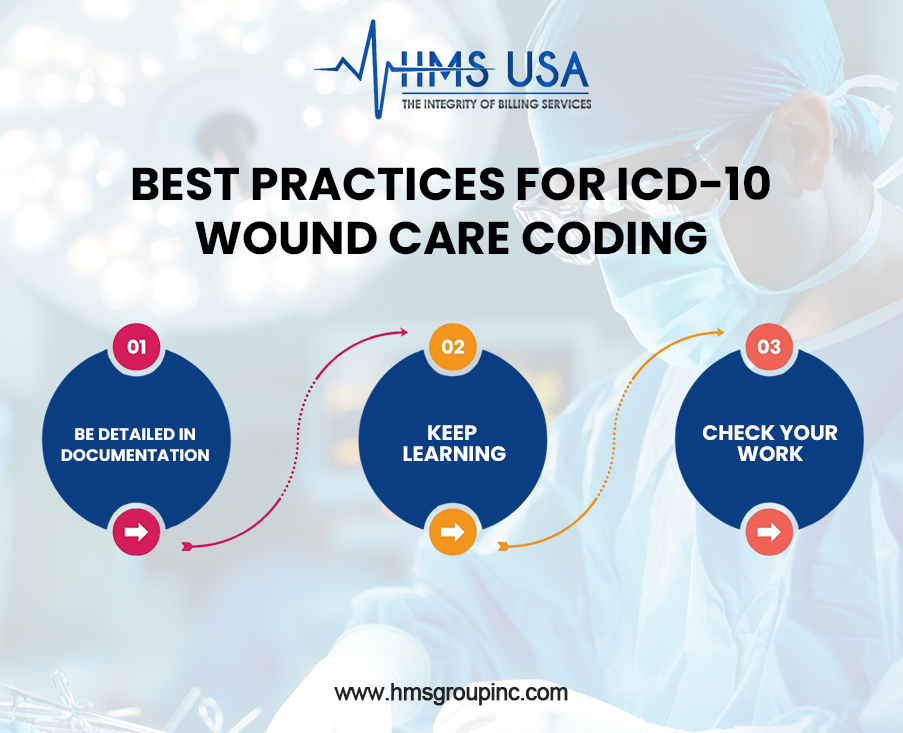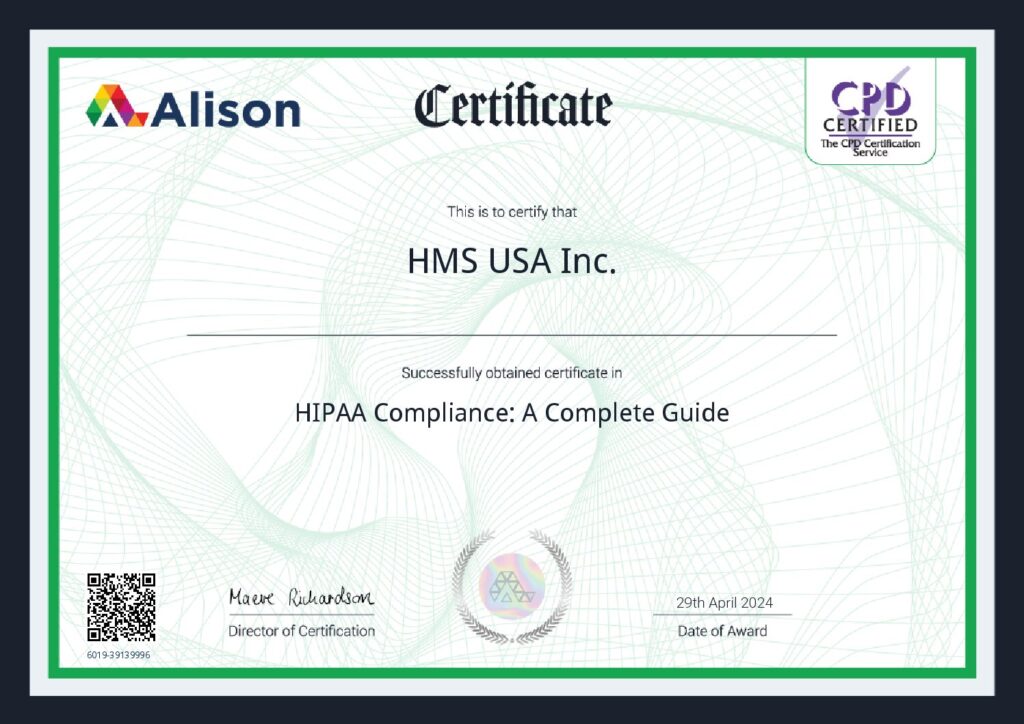Wound care is an integral part of healthcare, whether it involves treating a small cut, a surgical wound, or a long-term, chronic wound. Effective wound management helps patients heal faster and reduces the risk of complications, such as infections or prolonged recovery times.
To ensure that care is accurately recorded, doctors and hospitals use specialised medical codes known as ICD-10 codes. These codes clearly describe a patient’s condition, help different healthcare providers stay on the same page, and ensure that healthcare organisations receive payment correctly. Using the incorrect code can result in claim denials, compliance issues, or confusion in patient care.
In this blog, we’ll explain the ICD-10 code for wound care and its significance for medical billing, documentation, and improved patient outcomes.
What is ICD-10 Coding in Wound Care?
The International Classification of Diseases, 10th Revision (ICD-10) is a worldwide system used to code illnesses, symptoms, and medical procedures. In wound care, these codes capture essential details about the wound, including its type, severity, and location.
Why ICD-10 Coding Matters in Wound Care
For insurance approval, insurance companies and government programs require accurate codes to process claims.
For payment, accurate coding helps healthcare providers receive correct payments and avoid claim denials.
For patient care, detailed codes enable doctors and nurses to track the progress of a wound’s healing and determine the most effective treatment.
Because wound care can involve multiple treatments, such as dressing changes, cleaning (debridement), or surgery, it’s essential to use the correct ICD-10 code for complete and accurate records.
Common ICD-10 Codes for Wound Care
1. Open Wounds
S01.81XA: Cut (laceration) on the head without foreign object.
S91.301A: Open wound on the right foot.
Example: If someone has a deep cut on the scalp after a fall, the correct open wound code ensures the injury is clearly documented.
2. Surgical Wounds
T81.31XA – Reopening of a surgical wound.
T81.4XXA – Infection after surgery.
Example: If a surgical incision becomes infected, using the correct code helps connect the complication to the surgery.

3. Chronic Wounds
L97.221 – Ongoing ulcer on the right calf with skin breakdown.
L97.522 – Ongoing ulcer on the left foot with tissue exposed.
Example: A diabetic patient with a recurring leg ulcer would be coded under chronic wounds to guide long-term treatment.
3. Pressure Ulcers
L89.213 – Stage 3 pressure ulcer on the right buttock.
L89.154 – Stage 4 pressure ulcer on the sacral (lower back) area.
Example: If a patient in long-term care develops a stage 3 ulcer, correct coding ensures proper treatment and facility reporting.
Using the correct ICD-10 wound care codes helps healthcare providers stay compliant, ensure claims are approved, and provide patients with the appropriate care.
ICD-10 Code for Surgical Wound Care
Correct ICD-10 coding is crucial to ensure that medical records are accurate and that hospitals or clinics receive proper payment. When it comes to surgical wounds, the codes change depending on whether the wound is healing normally or if there are complications, like infections or delayed healing.
Examples of standard ICD-10 codes for Surgical Wound Care
T81.31XA: Surgical wound that has opened up (external), first visit
T81.4XXA: Infection after a procedure, first visit
T81.83XA: Ongoing post-surgery fistula (abnormal opening), first visit
Mistakes often happen when general wound codes are used instead of these specific complication codes. To avoid errors, doctors and coders must carefully review surgery notes and medical records.
Wound Dressing ICD-10 Coding
Not all wound care is the same, and ICD-10 codes reflect that. A simple bandage change is coded differently than removing dead tissue (called debridement) or a follow-up wound check.
To select the correct code, medical notes must be clear and concise. Instead of just saying “wound care provided,” it’s better to write precisely what was done, like “dressing change,” “debridement,” or “wound check.” This helps ensure correct coding, proper payment, and compliance with rules.
Best Practices for ICD-10 Wound Care Coding
Here are some tips to make wound care coding accurate and effective:
- Be detailed in documentation: Record wound type, location, size, depth, and the treatment provided.
- Keep learning: Coders should stay updated on ICD-10 guidelines and yearly changes.
- Check your work: Regular reviews and audits help identify common errors, such as using vague codes or missing complications.
When doctors and coders work closely together, they can avoid mistakes that lead to denied claims or compliance problems.
Why Accurate Coding Matters for Wound Care and Patient Health
Using the correct ICD-10 codes in wound care is crucial for both financial and medical reasons. Correct coding helps clinics and hospitals receive timely payments and avoid insurance claim denials. It also ensures that a patient’s treatment history is accurately recorded, allowing doctors to track their healing progress and provide more effective ongoing care. When providers and coders work together, it helps protect revenue and improve patient outcomes.
Closing Thoughts!
ICD-10 coding in wound care is not just about billing; it also supports patient safety, accurate records, and smooth reimbursement. Staying updated with the latest rules and avoiding common mistakes are key to success. Working with certified coders or medical billing experts can make the process easier and more reliable.
For professional help with ICD-10 wound care coding and medical billing, contact HMS Group Inc. today.
FAQs
What is the ICD-10 code for wound care after surgery?
The code you use for wound care after surgery depends on the type of problem. For example, if a wound opens up after surgery, the code T81.3 (Disruption of wound, not elsewhere classified) may apply. If the wound becomes infected, it may be classified as T81.4 (Infection following a procedure). The exact code will depend on the doctor’s notes about the wound.
How do I code for wound dressing changes?
Dressing changes are typically billed using procedure codes (such as CPT/HCPCS codes), not diagnosis codes. Still, you need an ICD-10 code to explain why the dressing change is necessary, such as a pressure ulcer, surgical wound, or skin injury.
What happens if wound care is coded incorrectly?
If wound care is coded incorrectly, insurance claims can be denied or delayed. It can also cause problems with medical records and may even affect patient care. Accurate coding ensures that providers are paid promptly and patients receive the appropriate treatment plan.
Are there separate ICD-10 codes for chronic vs. acute wounds?
Yes. Acute wounds (like cuts, injuries, or fresh surgical wounds) have different codes than chronic wounds (like diabetic ulcers, pressure ulcers, or long-term venous ulcers). Chronic wound codes often require more detailed information, such as the location, stage, or severity of the wound.
How often do ICD-10 wound care codes get updated?
ICD-10 codes are updated annually, typically on October 1st. Updates may add new codes, remove existing ones, or modify the rules for their use. This keeps coding up to date with current medical practices.









